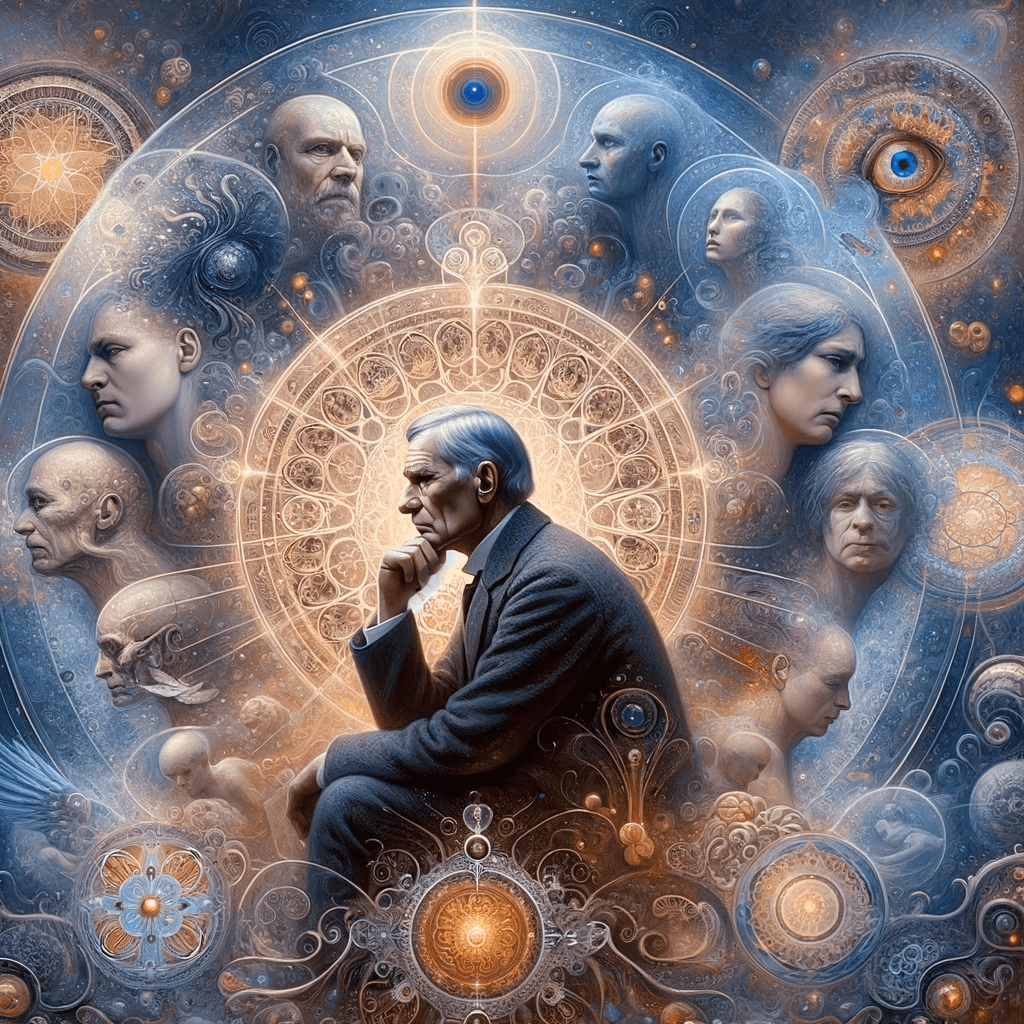Carl Jung

Carl Gustav Jung was a Swiss psychiatrist and psychoanalyst who founded analytical psychology. Born on July 26, 1875, in Kesswil, Switzerland, Jung is considered one of the most significant and influential figures in the field of psychology. He is best known for his concepts of the collective unconscious, the archetype, the complex, and the process of individuation.
The collective unconscious is a term coined by Carl Jung to describe a level of the unconscious mind that is shared by all human beings. According to Jung, the collective unconscious is a reservoir of universal and inherited psychological structures, known as archetypes, which are common to every individual regardless of their culture or personal experiences.
Archetypes are symbolic patterns or themes that represent universal human experiences and concerns, such as birth, death, love, and spiritual awakening. Examples of archetypes include the Great Mother, the Hero, the Trickster, and the Wise Old Man. These archetypal figures and motifs appear in myths, religions, literature, and art across cultures and throughout history, reflecting the collective unconscious’s influence on human thought and behavior.
Jung believed that the collective unconscious played a crucial role in the process of individuation, which is the journey of personal growth and self-discovery that leads to the development of a fully integrated and mature personality. By exploring the archetypes within one’s own psyche and recognizing their influence on one’s thoughts, emotions, and actions, an individual can gain greater self-awareness and psychological balance.
Jung’s educational background started with his medical degree, which he earned from the University of Basel in 1900. After completing his studies in medicine, Jung pursued his interest in psychiatry and worked as an assistant physician under the renowned psychiatrist Eugen Bleuler at the Burghölzli Psychiatric Clinic in Zurich. Here, he expanded his knowledge of mental illnesses and developed the basis of his later theories.
In terms of employment, Jung held various positions throughout his life. He worked as a psychiatrist at the Burghölzli Psychiatric Clinic, a lecturer at the University of Zurich, and later as a professor of medical psychology at the Swiss Federal Institute of Technology. Jung also maintained a private practice as a psychoanalyst, where he treated patients and developed his ideas on analytical psychology.
Jung’s relationship to unidentified flying objects (UFO) primarily centers around his book, “Flying Saucers: A Modern Myth of Things Seen in the Skies” (1959). In this work, Jung approached the UFO phenomenon from a psychological perspective, examining the symbolic significance of UFO sightings rather than focusing on their physical existence. He posited that the widespread interest in UFOs could be a manifestation of a deep-seated psychological need for wholeness and a connection to the unconscious.
Facts about Carl Jung:
- Jung had a near-death experience in 1944, which profoundly impacted his view of the afterlife (Source: “Memories, Dreams, Reflections,” his autobiography published in 1961).
- Jung was a prolific artist, and many of his paintings can be found in “The Red Book,” an illuminated manuscript that he created over a 16-year period, documenting his imaginative experiences (Source: The Rubin Museum of Art’s exhibition on “The Red Book,” 2009-2010).
- Jung’s analytical psychology served as the basis for the Myers-Briggs Type Indicator (MBTI), a popular personality assessment tool created by Isabel Briggs Myers and Katharine Cook Briggs (Source: “Gifts Differing: Understanding Personality Type” by Isabel Briggs Myers, 1980).
Jung was a prolific author, and some of his most notable works include “Psychological Types” (1921), “Modern Man in Search of a Soul” (1933), “Man and His Symbols” (1964, published posthumously), and “The Archetypes and the Collective Unconscious” (1959). He was the primary author of these works, with contributions from his colleagues in some cases.
There are numerous books written about Carl Jung, with some focusing on his life, work, and ideas. Examples include “Jung: A Biography” by Deirdre Bair, “The Cambridge Companion to Jung” edited by Polly Young-Eisendrath and Terence Dawson, and “Labyrinths: Emma Jung, Her Marriage to Carl, and the Early Years of Psychoanalysis” by Catrine Clay.
Carl Jung remains an influential figure in the field of psychology, with a lasting impact on our understanding of the human psyche.

